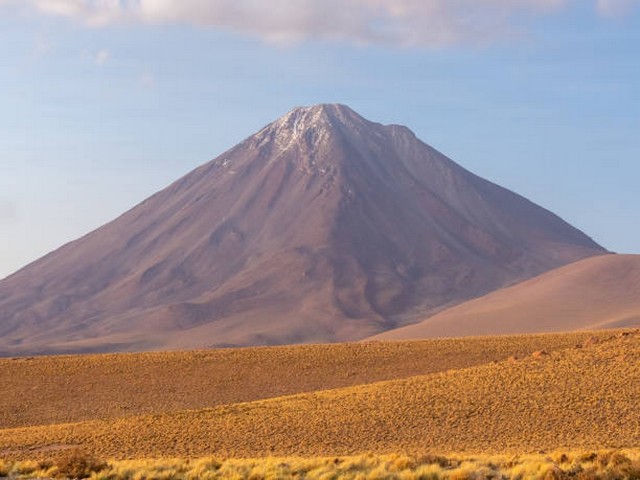Kilimanjaro Safety Guidelines For Trekkers: Essential Tips From KCTE
Standing as the crown jewel of Tanzania, Mount Kilimanjaro beckons adventurers from every corner of the globe with its snow-capped peak and breathtaking vistas. The journey to Uhuru Peak is not just about endurance and strength; it’s a transformative adventure that intertwines with the spirit of the wild. At the Kilimanjaro Centre for Trekking and Ecotourism (KCTE), we believe that every step taken on this majestic mountain should be a blend of thrill and safety. In this comprehensive guide, we share essential safety guidelines that ensure you cherish every moment on Kilimanjaro, with health and well-being as top priorities.
Understanding Kilimanjaro: More Than Just a Trek
Before delving into the guidelines, it’s crucial to understand why Kilimanjaro is not just another hike. Rising about 5,895 meters (19,341 ft) above sea level, Kilimanjaro is the highest peak in Africa and the world’s tallest free-standing mountain. Its unique ecosystems and rapid altitude gain require special attention to safety to navigate successfully.
Pre-Trek Preparation: The Foundation of a Safe Climb
Fitness and Health
Kilimanjaro is accessible to most healthy individuals, but a reasonable level of fitness increases enjoyment and safety. Engage in cardiovascular exercises like jogging, cycling, and swimming months before your trek. Strength training for legs and core also helps.
Medical Check-Up
Schedule a visit to your physician for a comprehensive health check. Discuss your plans and address concerns like altitude sickness. Ensure your vaccinations are up-to-date, and you have necessary medications.
Packing Essentials
Equipping yourself with the right gear contributes significantly to your safety. Essentials include:
- Thermal clothing and waterproof gear
- High-quality hiking boots
- Protective sunglasses and sunscreen
- A durable backpack
- Sleeping bags suitable for sub-zero temperatures
- Water purification tablets and reusable water bottles
On the Mountain: Safety Practices to Live By
Acclimatization is Key
Altitude sickness is a primary concern. Choose a route that allows gradual acclimatization, and consider spending extra days on the mountain. Our guides at KCTE are trained to recognize symptoms of altitude sickness and handle them efficiently.
Stay Hydrated
Dehydration is a common issue. Drink at least three to four liters of water daily during the climb to maintain hydration and help acclimatization.
Follow the Guide’s Lead
KCTE’s experienced guides are your most valuable resource. They know the mountain’s moods and paths like the back of their hands. Trusting their judgment and instructions can be lifesaving.
Buddy System
Never wander alone. Use the buddy system to keep tabs on each other’s condition. Immediate response can prevent complications if health issues arise.
Respect the Mountain
Kilimanjaro’s weather can be unpredictable. Be prepared for sudden changes and heed warnings from your guides. Respecting nature’s boundaries enhances safety for everyone.
Post-Trek Recovery
After descending, give your body time to recover. Stay hydrated and rest. Monitor your health and consult a doctor if you experience prolonged symptoms.
Why Choose KCTE for Your Kilimanjaro Adventure?
At Kilimanjaro Centre for Trekking and Ecotourism, your safety is our paramount concern. We provide:
- Experienced, certified guides who prioritize your well-being
- Customizable treks that cater to your fitness level and preferences
- Comprehensive pre-trek briefings and safety orientations
- High-quality rental gear for optimal comfort and safety
FAQs About Climbing Kilimanjaro Safely
What is the best time of year to climb Kilimanjaro for safety?
The best times are during the dry seasons, January to mid-March and June to October, when the weather is more stable.
How do I prevent altitude sickness?
Acclimatize properly by choosing longer routes, hydrate adequately, eat well, and ascend slowly. Listen to your body and communicate openly with your guide.
Can beginners climb Kilimanjaro?
Yes, beginners can successfully summit Kilimanjaro. However, adequate preparation in terms of fitness, gear, and mental readiness is crucial.
What should I do if I start feeling ill on the mountain?
Inform your guide immediately. KCTE guides are trained to deal with medical emergencies and will take appropriate steps, including descent if necessary.
Embark on Your Journey with Confidence
As you prepare to conquer the heights of Kilimanjaro, remember that the journey is as monumental as the destination. With the right preparation, a respect for the mountain’s power, and the guidance of seasoned professionals like those at KCTE, you’re set for an adventure that’s as safe as it is exhilarating.
At KCTE, we’re more than just a tour operator; we’re your partners in adventure, ensuring every step you take on Kilimanjaro is safe, informed, and unforgettable. Ready to take the first step towards the peak? Contact Kilimanjaro Centre for Trekking and Ecotourism today and let us guide you to the summit with safety and expertise.
Climbing Kilimanjaro is an incredible experience that offers not just panoramic views but a profound sense of achievement. Ensure it’s done safely and memorably by booking your climb with Kilimanjaro Centre For Trekking and Ecotourism – where your adventure and safety ascend together.




